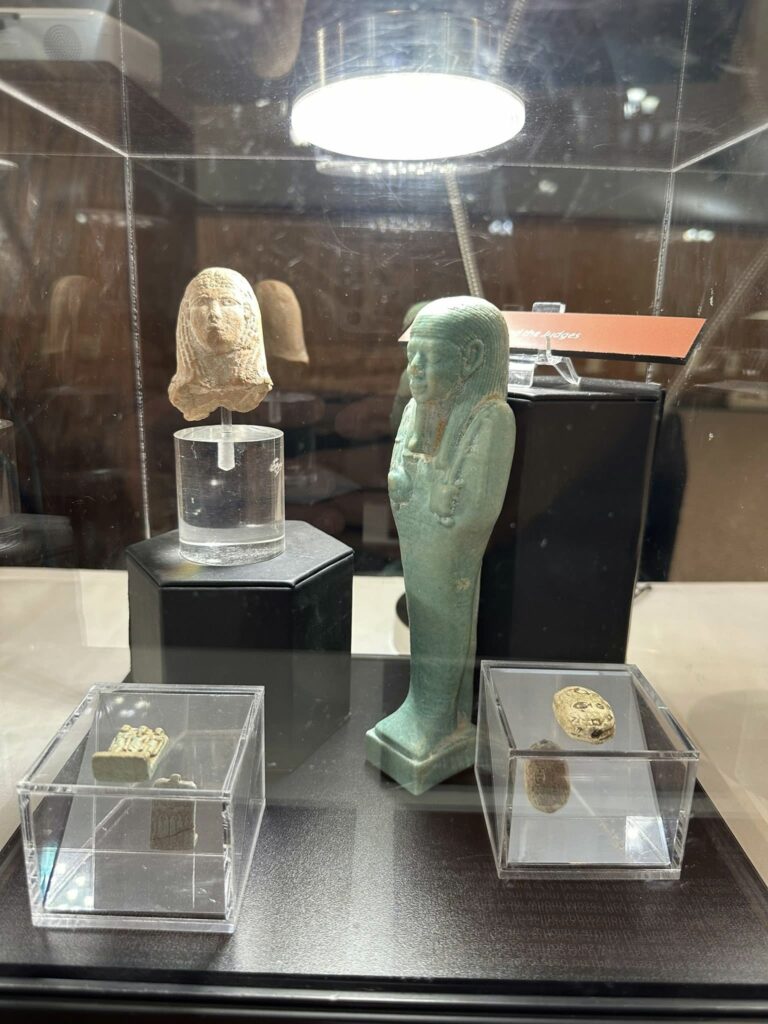
On July 11–12, 2025, the inaugural Biblically Grounded Archaeology Experience took place in Bristol Virginia. Southwest Radio Ministries sponsered the event. Clayton Van Huss, the director of Affirm Apologetics and host of the Biblically Grounded podcast, was the event host. Its goal was to present current research and finds in biblical archaeology to a general audience. The event, which drew around 100 attendees in person and online, took place over two days. It featured six conference speakers who each spoke twice. Additionally, the event featured an amazing display of over 50 ancient biblical artifacts. Some of these were available for attendees to pick up and hold, literally touching biblical history.
Day 1
Tommy Chamberlin: Illuminating the Bible: How Artifacts Bring the Old Testament to Life.
The conference kicked off with a fun presentation by Tommy Chamberlin the founder of Expedition Archaeology and a supervisor at the Tel Shiloh excavations. Tommy centered his presentation around the artifact display and connected various artifacts with the biblical text. He highlighted a variety of artifacts including a cuneiform tablet from the time of the Patriarchs, a lmlk (Hebrew for “belonging to the king”) seal impression of one of the kings of Judah, and an oil lamp from the time of David. Tommy surprised the audience by putting oil and a wick into the ancient lamp and lighting it while an audience member held it in her hands. In this way, he demonstrated the small amount of light put out by the lamp.
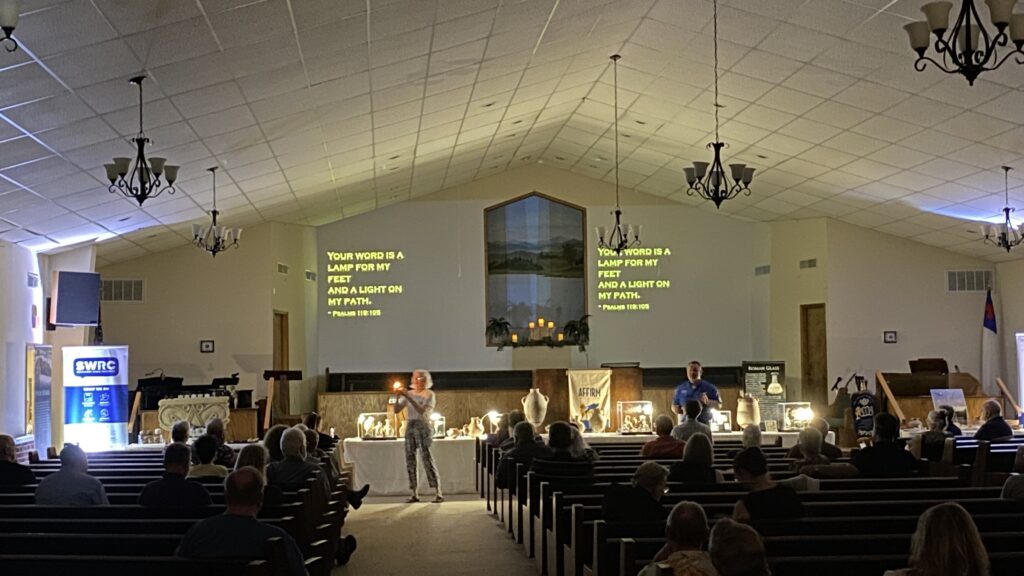
Dr. Douglas Petrovich: Israel in Egypt at the Time of Joseph.
The second conference presentation focussed on Egyptian archaeology, analyzing the evidence for Israelites in 12th dynasty Egypt. Dr. Petrovich is a graduate of the University of Toronto with a PhD in Syro-Palastinian Archaeology. He is a professor at Brookes Bible College. Dr. Petrovich presented a timeline that placed Joseph’s arrival in Egypt at 1898 BC. He looked at the archaeology of Avaris, showing evidence of Asiatics living there and connecting them with Jacob and his sons.
Clayton Van Huss: Don’t Ride the Unicorn: The Dangers of Pseudoarchaeology.

Clayton is the director of Affirm Apologetics and the host of the Biblically Grounded podcast. He serves as a supervisor at the Tel Shiloh excavations. His first conference presentation was a departure from the usual archaeological presentation. Instead of presenting archaeological finds, Clayton taught the audience how to discern between scientific archaeology and pseudo-archaeology. He warned of the danger of making false claims about biblical history while expecting people to believe the most incredible claim of all: that Jesus died for our sins and rose from the dead.
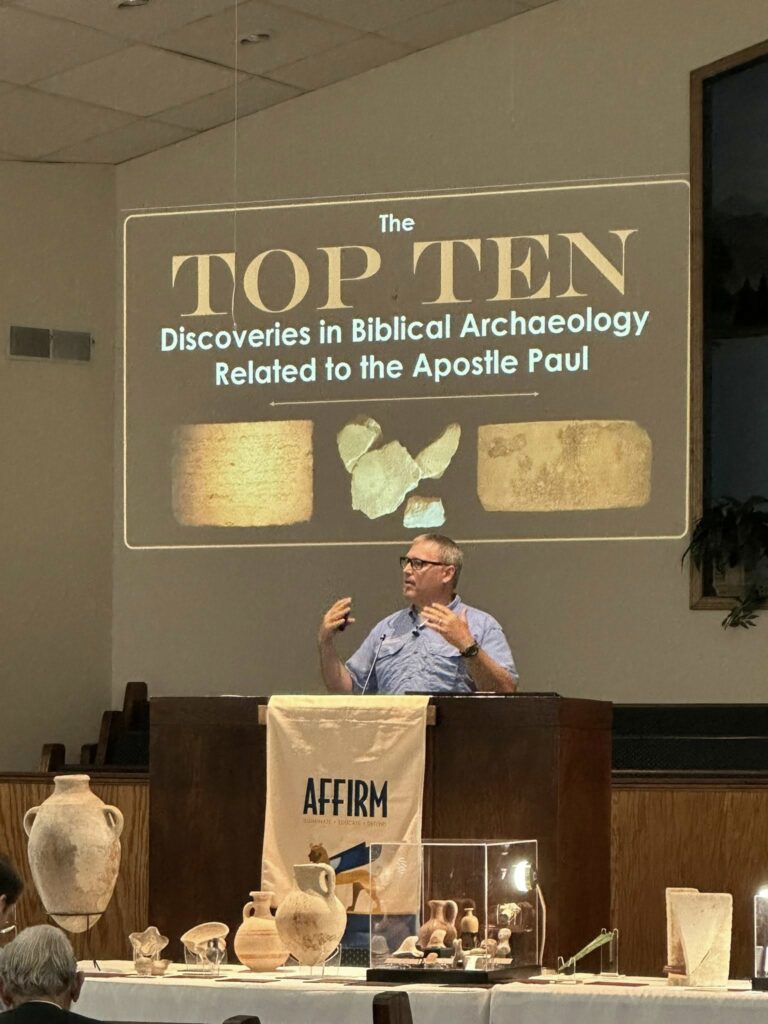
Bryan Windle is a pastor and lecturer who runs the Bible Archaeology Report blog. He presented one of the top ten lists for which his blog is well-known. Highlights from his top ten list for the Apostle Paul included the Erastus inscription, referencing one of Paul’s acquaintances (Romans 16:23). It also included Herod’s Palace at Caesarea, where Paul was tried and held captive, and the bema at Corinth, where Paul was brought before the tribunal.
Abigail Van Huss: The Archaeology of a Miracle: Excavating the Place where Hannah Prayed.
The next presentation, by Abigail Van Huss, started with a biblical story, that of Hannah’s prayer for a child. Abigail is a PhD candidate at Ariel University and the assistant director of the Tel Shiloh excavation. She spoke about the history of excavations at Tel Shiloh as well as the excavation process. Next, Abigail highlighted some of the finds from the recent excavations at Tel Shiloh. She concluded with a proposed location for the biblical tabernacle at Shiloh and the spot where Hannah prayed.
Dr. Scott Stripling: The Shiloh Favissa: Evidence of the Biblical Sacrificial System.
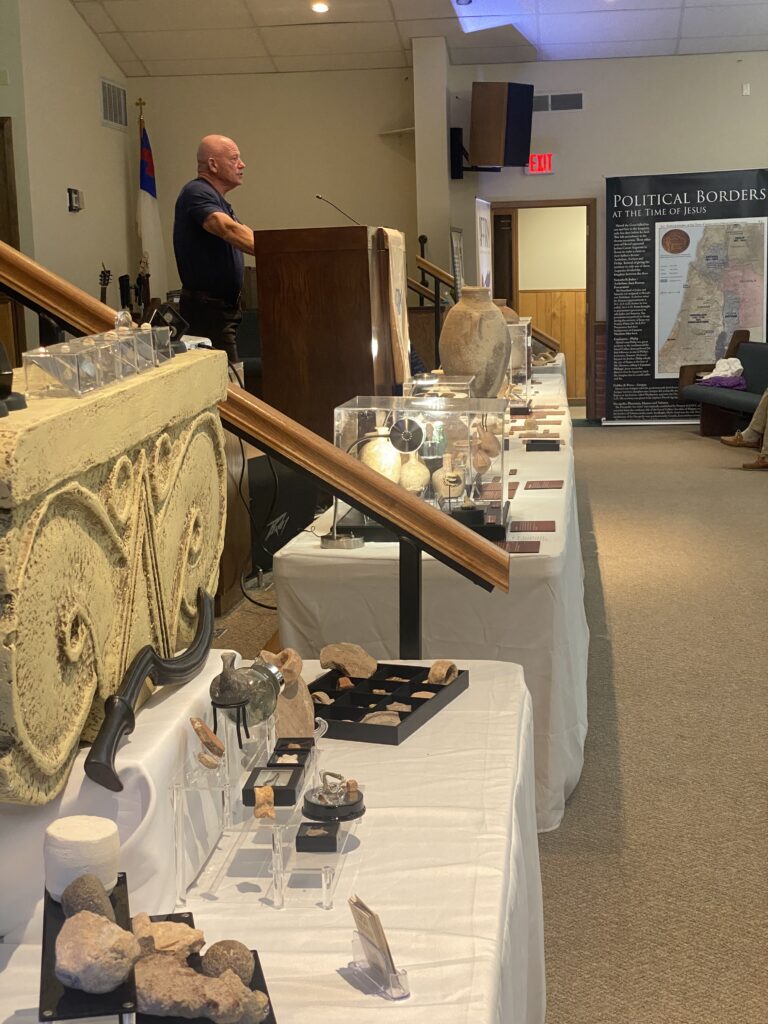
The final presentation of the day came from Dr. Scott Stripling, the director of the Tel Shiloh excavation and the Provost of The Bible Seminary. Dr. Stripling spoke on the religious deposit of offerings (favissa) at Shiloh. He discussed the kosher animal bones found in the favissa as well as the gold and silver jewelry found there. Then, he explained the dating of the deposit based on both ceramic typology and carbon-14 testing, demonstrating that the deposit dates to the early Israelite period.
Day 2
Abigail Van Huss: On the Mountain of the Curse: Joshua’s Altar on Mount Ebal.

Abigail Van Huss kicked off the second day of conference presentations with an analysis of Joshua’s altar on Mount Ebal. She first outlined the biblical criteria for Joshua’s altar. These criteria were based both on passages relating to the Mount Ebal altar and passages related to Israelite altars in general. Abigail then analyzed the archaeological findings at el-Burnat (A), a site on Mount Ebal, to determine whether the site qualifies as Joshua’s altar. She concluded that the earliest phase of usage at the site does indeed qualify as Joshua’s altar.
Dr. Scott Stripling: The Crucifixion: An Archaeological Perspective.
Dr. Stripling’s second presentation was not for the faint of heart. He went into gut-wrenching detail about Roman crucifixion practices. His conclusion was that not only do the gospel accounts of Jesus’ crucifixion present a true picture of Roman crucifixion practices, but Old Testament prophecies of the Messiah, such as Genesis 3:15, were perfectly fulfilled in Jesus’ crucifixion.
Tommy Chamberlin: Illuminating the Bible: How Artifacts Bring the New Testament to Life.
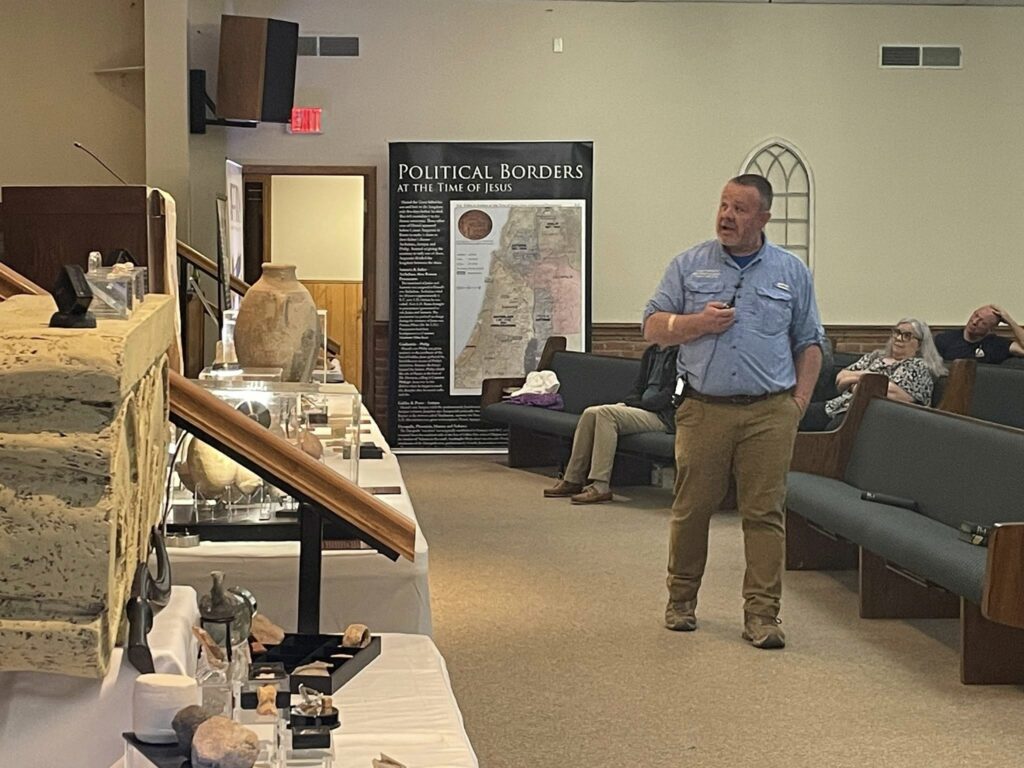
In Tommy’s second presentation, he picked up where he had left off the day before. He continued through the New Testament, bringing to life artifacts on display at the event and correlating them with biblical events. He showcased artifacts such as a silver shekel of Tyre, an ossuary (bone box) from a first-century Jewish burial, and a cooking pot from the time of Jesus.
Dr. Douglas Petrovich: Israel in Egypt at the Time of Moses.
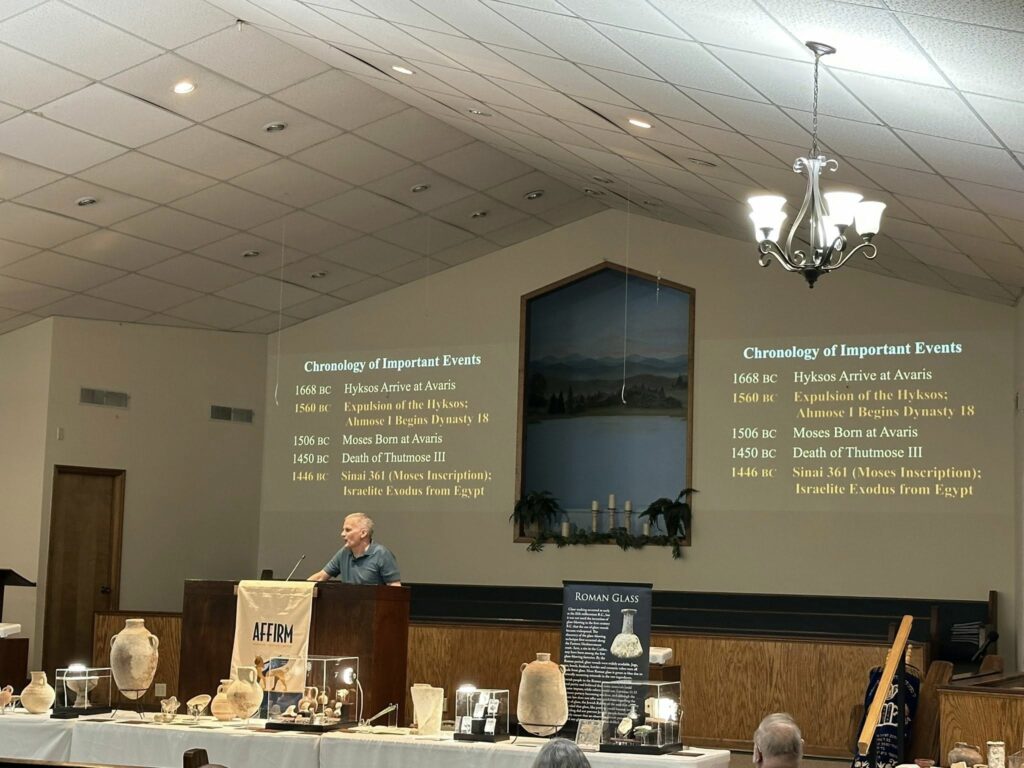
In his second presentation, Dr. Petrovich continued with his presentation of Egyptian archaeology, this time focussing on the period of Moses and the Israelites’ departure from Egypt. He contrasted the expulsion of the Hyksos with the departure of the Israelites and discussed burials of individuals who appeared to have been ceremonially killed. Dr. Petrovich also discussed the Proto-Sinaitic alphabetic inscriptions and lamb burials relating to the first Passover.
Bryan Windle: The Latest Research on the Fall of Jericho.
Bryan’s second presentation was of interest to everyone following the latest research related to the conquest. He presented his research from his recently completed Masters thesis and argued convincingly that Jericho’s City 5 was the city that Joshua and the Israelites conquered rather than City 4, the phase of occupation traditionally attributed to the period of the conquest. This shift in the research solves many of the problems that have plagued biblical research in regards to Jericho.
Clayton Van Huss: Marauders in Canaan: Finding Joshua’s Conquest in Ancient Documents.
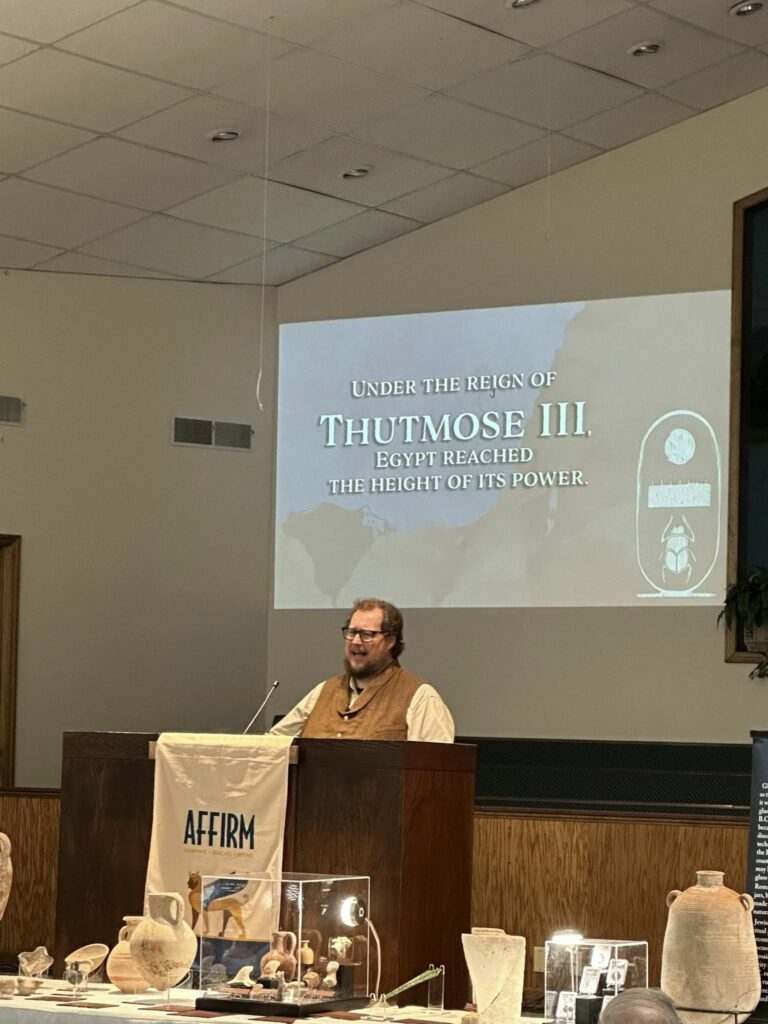
The final presenter of the conference, Clayton wound things up with a thought-provoking presentation on the Habiru. The Habiru are a class of people mentioned on the Amarna Letters, cuneiform tablets found in Egypt. Clayton correlated the actions of the Habiru directly with the Israel conquest of Canaan, pointing out direct parallels between the two groups. He argued that the term Habiru correlates directly with the term Hebrew and that the timing of the Amarna Letters coincides precisely with the Israelite conquest as presented in the Septuagint version of the text.
Final Thoughts
The Biblically Grounded Archaeology Experience was a great opportunity to learn about the latest research and finds in biblical archaeology. Many attendees were local; others came from as far away as California to attend. Some distance attendees opted for the online attendance option, which allowed them to view the conference presentations live online. The in-person attendees enjoyed listening to the conference presentations, talking with the archaeologists, viewing the museum display of biblical artifacts, and purchasing books. As the inaugural Biblically Grounded event, this was a decided success, and we look forward to next year’s event.

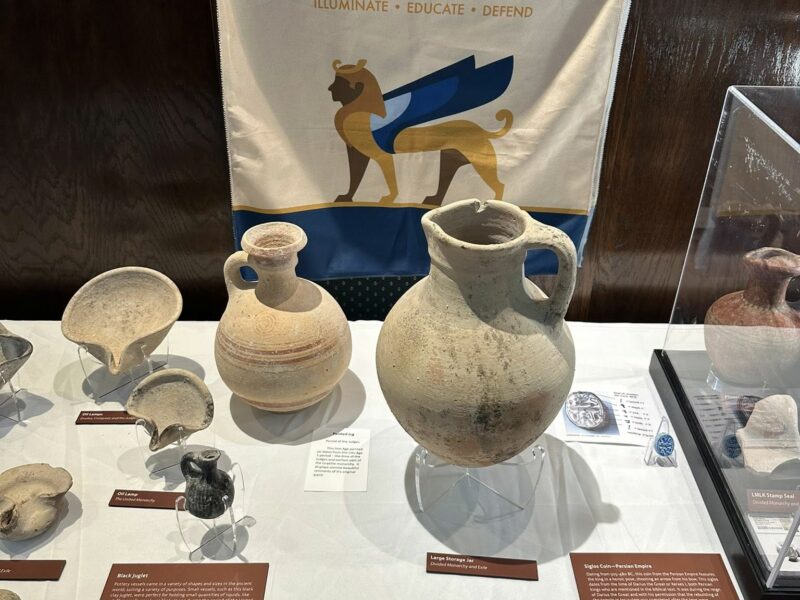
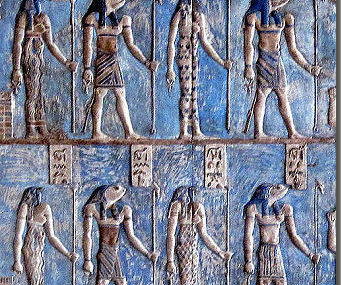
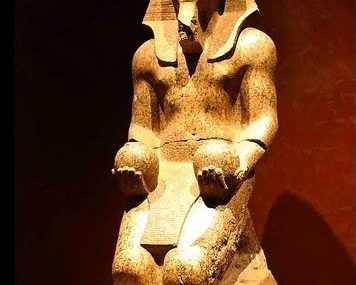
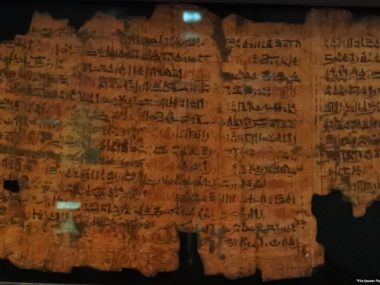
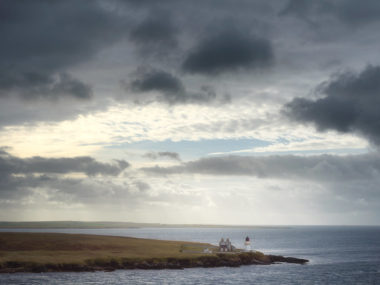
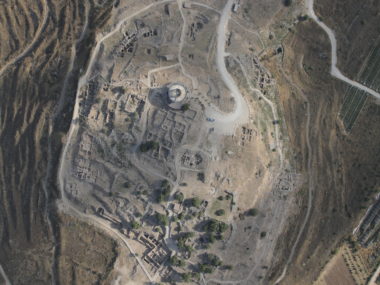
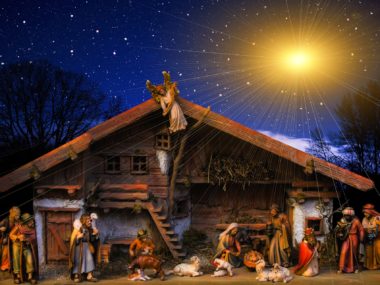




This was amazing to read about! I wish I knew that this was happening. I would have loved to try and watch online. While my main fields of interest are biology and paleontology, I do love archaeology as well. I hope I can catch next years event. Maybe even in person! I can only hope. Amazing work by all of these amazing scientists!